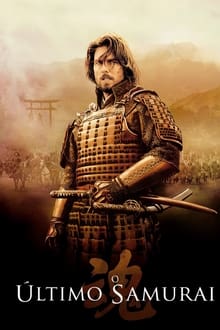
Português
Um choque de culturas.
Este filme está ambientado dos finais do século XIX e conta a viagem ao Japão de Nathan Algren, um veterano das Guerras Índias contra os nativos americanos, a fim de colaborar no treinamento do exército do imperador, que desejam modernizá-lo segundo os padrões ocidentais. Mas ele acabará por conhecer e ficar fascinado pela cultura do seu oponente, o samurai Katsumoto.
A abertura dos países orientais ao Ocidente não foi fácil. A China e o Japão eram dois países com culturas antigas e um apego às tradições, por isso olhavam os ocidentais com desdém. Mas eles não tinham tecnologia militar avançada. Usando a "diplomacia do canhão" e as Guerras do Ópio, os dois países foram forçados a abrir-se ao comércio com os ocidentais e a permitir a fixação de entrepostos comerciais como Nanquim, Hong Kong (Reino Unido), Xangai (França) ou Macau, concedida a Portugal no século XIX mas onde já existia uma fortificação portuguesa desde o século XVI. De facto, esta abertura começara com os portugueses, espanhóis e holandeses nesse período, mas sofrera um grande revés posteriormente. O choque de culturas foi inevitável: se alguns ficaram descontentes, outros adoraram conhecer os ocidentais. Este foi o caso do Imperador Meiji do Japão e este é o contexto histórico em que o filme está definido.
Dirigido por Edward Zwick (que conseguiu aqui um dos maiores sucessos de sua carreira), o filme apresenta Tom Cruise e Ken Watanabe nos papéis principais. Dos dois actores, tal como o resto do elenco, só podemos falar bem. Eles portaram-se bem e isso reflecte-se na maneira como contracenam e na maneira como ambos incorporaram os personagens, os quais possuem forte carga psicológica e dramática. Katsumoto é um homem amargurado, considerado um traidor por aqueles a quem só deseja servir da melhor maneira e consciente de que chegará o dia em que morrerá sem ser compreendido. Algren é um homem perseguido pelo seu próprio passado como militar. Ele sente que cometeu erros numa guerra injusta contra inocentes. Só no Japão se recuperará desse estado de espírito graças à bravura e nobreza dos samurai. A banda sonora, de Hans Zimmer, é icónica, e os efeitos visuais e especiais, especialmente nas cenas de combate, são irrepreensíveis. Os trajes foram feitos com todos os detalhes e as armaduras dos samurai, com todos aqueles detalhes, são dignas de ser apreciadas.
Por todos esses aspectos, este filme foi aclamado pela crítica e bem sucedido na bilheteira, recebendo quatro indicações ao Óscar (Melhor Actor Secundário, Melhor Direcção Artística, Melhor Design de Figurino e Melhor Mistura de Som) e três para os Globos de Ouro (Melhor Actor Dramático, Melhor Actor Secundário Dramático e Melhor Banda Sonora Original). É um filme que merece ser visto por todos os que apreciam a cultura oriental, a História ou simplesmente um bom filme.
English
A clash of cultures
This film is set in the late 19th century and tells the journey to Japan of Nathan Algren, a veteran of the Indian Wars, to collaborate in training the armies of the Emperor, who wish to modernize it by Western standards. But he will eventually get to know and be fascinated by his opponent's culture, the samurai Katsumoto.
The opening of the Eastern countries to the West wasn't easy. China and Japan were two countries with ancient cultures and an attachment to traditions, so they looked upon the Westerners with disdain. But they didn't have advanced military technology. Using "cannon diplomacy" and the Opium Wars, these countries were forced to open up to trade with Westerners and to allow the establishment of commercial communities such as Nanking, Hong Kong (UK), Shanghai (France), or even Macau, granted to Portugal in the 19th century but where the Portuguese are already established since the 16th century. In fact, this opening process had begun with the Portuguese, Spanish and Dutch during this period, but had suffered a major setback later. The clash of cultures was inevitable: if some were discontented, others loved meeting the Westerners. This was the case of Emperor Meiji of Japan, and this is the historical context in which the film is defined.
Directed by Edward Zwick (who has achieved one of the biggest hits of his career here), the film features Tom Cruise and Ken Watanabe in the lead roles. Of these two actors, like the rest of the cast, we can only speak well. They behaved well and this is reflected in the way they work and in the way they both incorporated the characters, who have a strong psychological and dramatic charge. Katsumoto is an embittered man, considered a traitor to those who only wish to serve in the best way and aware that the day will come when he will die without being understood. Algren is a man pursued by his own military past. He feels he made mistakes in an unjust war against innocent people. Only in Japan will he recover from this state of mind, thanks to the bravery and nobility of the samurai. Hans Zimmer's soundtrack is iconic, and visual and special effects, especially in combat scenes, are irreproachable. The costumes were made with all the details and the armor of the samurai, with all those details, are worthy of being appreciated.
For all these aspects, this film was critically acclaimed and successful at the box office, receiving four nominations for the Oscar (Best Supporting Actor, Best Art Direction, Best Costume Design and Best Sound Mixing) and three for the Golden Globes Dramatic Actor, Best Dramatic Secondary Actor and Best Original Soundtrack). It's a film that deserves to be seen by all who enjoy Eastern culture, history or just a good movie.